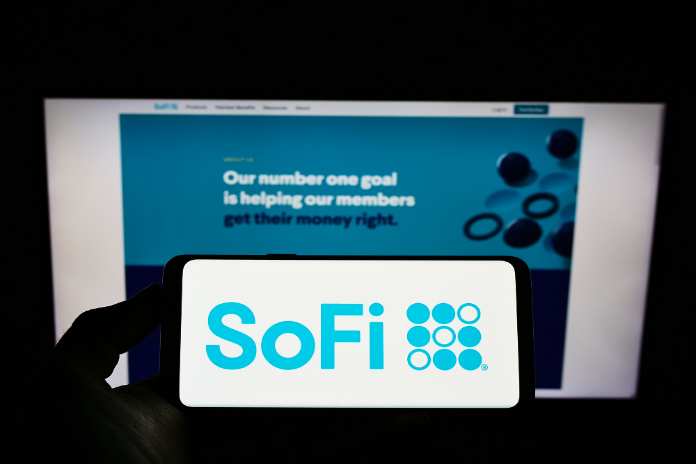SoFi Technologies, Inc. (NASDAQ:SOFI) continues to operate well, with net losses reducing and exceptional adoption/membership growth in FQ’22. Its newly constituted bank charter also performed significantly better than predicted, with 36.8% QoQ growth in deposits to $2.7B and GAAP net income of $25M in FQ2’22. The company’s increased Annual Percentage Yield from 1.5% in June to 1.8% in July 2022, increasing weekly deposit growth to $120M in FQ2’22, is primarily responsible for the company’s robust growth.
Assuming relative outperformance in its bank business in the future, SOFI might declare profitability sooner by FY2024, which worsening macroeconomic conditions would support. As a result, it might potentially spark a long-term market surge.
SOFI is our top selection in the fintech industry for long-term investment due to its present undervaluation and tremendous potential. However, investors should always structure their portfolios properly because the firm is not likely to report profitability for the next two years.
SOFI Continues To Outperform Estimates – Highlighting Its Prowess Ahead
SOFI reported revenues of $352.42M and operating margins of -26.9% in FQ2’22, showing huge gains of 52.7% and 35.6 percentage points, respectively, year over year. Furthermore, the firm reported improved profitability, with net income of -$95.84M and net income margins of -27.2%, indicating increases of 42% and 44.4 percentage points, respectively, year on year. The increased financial performance is primarily due to a 59% YoY increase in contribution profit from the lending sector and a 58% YoY increase in contribution profit from the technology platform.
In Q2’22, it is also clear that acceptance of SOFI’s products continued to grow, despite market concerns about rising interest rates. The firm claimed 450K new members, reflecting 61.2% year-on-year growth to a total of 4.31M. Furthermore, SOFI had an impressive new product acceptance rate of 702K in 6.56M, dismissing any concerns about slowing growth in the negative macroeconomic situation.
Nonetheless, SOFI has reported negative Free Cash Flow (FCF) creation thus far, with an FCF of -$970.4M and an FCF margin of -275.4% in FQ2’22. It indicates a tremendous drop of 350.5% and 155.5 percentage points yearly.
SOFI’s SBC Remains A Notable Concern For Long-Term Investors
Nonetheless, SOFI has diluted its current shareholders several times since its IPO. By FQ2’22, the business reported diluted shares outstanding of 910.05M, a 13.6% rise from its secondary offering in November 2021 and a staggering 249.3% growth since its IPO in June 2021. Furthermore, with another $1B of mixed shelf offering scheduled in July 2022, we may expect an additional 157.97M share dilution, based on current share prices. As a result, since SOFI’s secondary offering, its IPO shareholders may have been diluted by 292.5% or 33.4%.
This is quite concerning, considering the continuous increase in SOFI’s Stock-Based Compensation (SBC) of 53.6% YoY in FQ2’22. The business might report up to $336.32M in SBC expenditures for FY2022, reflecting a significant rise of 40.5% year on year. As a result, the value of existing stockholders will gradually but steadily erode in the future.
Nevertheless, positive investors with a larger risk tolerance should be unconcerned because similar techniques are popular among most high-growth tech businesses that have yet to show sustainable profitability. Since its IPO in 2015, Block (SQ) has diluted its long-term investors by 340.9%. Even Upstart (UPST) has grown by 322.4% since its IPO in 2020 and by 351.7% after its post-secondary offering in FQ1’21. However, it is also worth noting that the latter began a significant stock repurchase program in February 2022. Once SOFI reaches sustainable profitability, we may see the corporation announce similar plans beginning in 2025.
SOFI May Achieve Profitability Earlier, Assuming Sustained Growth In Bank Segment
SOFI is predicted to generate revenue growth at a CAGR of 38.91% over the next three years while potentially approaching net income break-even by FY2025. These figures reflect a -8.1% decrease from earlier forecasts in April 2022. As a result, Mr. Market continues to be concerned about a possible recession in FY2023 and FY2024.
Nonetheless, consensus expects SOFI will generate exceptional revenues of $1.5B and net income of -$0.41B in FY2022, reflecting a 54.6% and 15.2% YoY increase, respectively. These are mostly due to the company’s increased outlook for the year, up to adj. EBITDA of $104 million to $109 million.
So, Is SOFI Stock A Buy, Sell, or Hold?
SOFI is now trading at an EV/NTM Revenue of 3.28x, and an NTM P/E of -30.36x, both of which are lower than the 2Y EV/Revenue mean of 8.39x but higher than the 2Y P/E mean of -53.08x. The stock is currently trading at $6.10, 75.2% lower than its 52-week high of $24.65 and close to its 52-week low of $4.82. The gain following outstanding FQ2’22 earnings has been digested, presenting an extremely appealing entry position for patient investors.
Given the price objective of $11.13 and a 75.83% upside from current prices, consensus expectations for SOFI remain positive. The Fed’s next rate rise is also projected to be slower than prior ones, perhaps indicating brighter days ahead. As a result, rumors of a looming recession have been put to rest for the time being.
Though SOFI is trading at a slight premium to its previous low of $4.82, we believe the current risk-reward ratio is still suitable for long-term investing. Bottom fishers may have to wait for another retracement before the Fed’s next rate rise in September 2022. However, considering the recent 15.3% rebound in the S&P 500 Index during the last two months, excessive market pessimism may already be baked in.
As a result, we reaffirm our Buy rating on SOFI.
Featured Image : Megapixl © Timonschneider

















